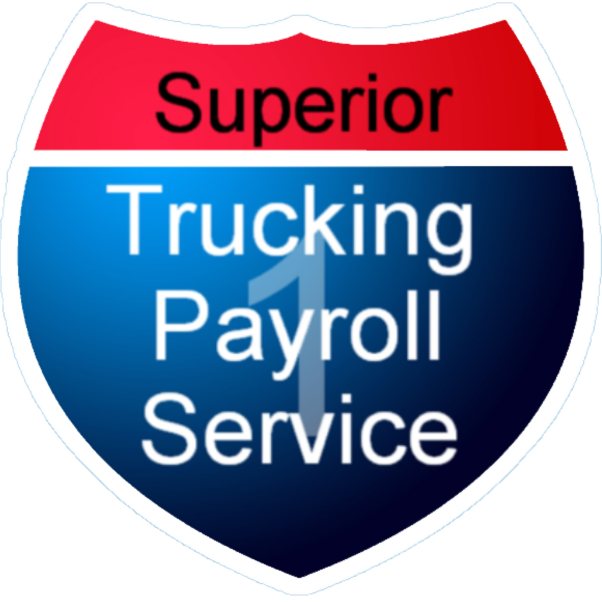
Why do truck driver pay rates keep changing?
Are you struggling to understand how market shifts, driver shortages, and rising costs affect your pay or your company’s payroll? If you’re a driver who has seen pay go up and down or a trucking company trying to balance payroll with costs, you’re not alone. Many in the trucking world are trying to make sense of these changes.
Imagine being able to know how things like demand, the number of drivers, and fuel prices will affect pay rates. Instead of feeling uncertain, you could plan ahead with confidence. This understanding can help you make better choices, whether you’re a driver picking your next job or a company setting pay rates.
Here’s the good news: we have real data from our clients that can help explain what’s been happening. This data provides valuable insight into these changes and what they mean for you.
In this article, we’ll break down the main factors that change truck driver pay rates. You’ll learn how changes in freight demand and operating costs have caused wages to go up and down. By the end, you’ll know what drives these changes and what they mean for the future of driver pay.
High Freight Demand and Its Impact on Truck Driver Pay Rates
One of the biggest reasons for changes in driver pay was the jump in freight demand, especially during the pandemic.
E-commerce Boom Increased Demand for Truck Drivers
When the pandemic hit, more people started shopping online. This led to a huge jump in the need for trucks to move goods across the country. With more freight to move, trucking companies needed more drivers. Our Driver Pay Index shows a clear rise in driver pay during this period, as companies rushed to hire and keep drivers to meet the growing demand.
Essential Goods Transportation Drove Up Driver Wages
The rush to transport essential goods, like medical supplies and groceries, added even more demand. Trucking companies had to ensure they had enough drivers to keep up. To attract drivers quickly, they raised pay rates, as reflected in our data. This increase wasn’t just temporary; it lasted through much of 2020 and 2021, creating a new standard for driver wages.
How Freight Demand Stabilization Affected Truck Driver Pay Rates in 2022
As the data shows, the high demand from 2020 to 2021 started to level off in 2022. Although demand was still strong, it was no longer at the peak levels. This change caused wages to slowly even out. Our data indicates that while pay rates remained higher than pre-pandemic levels, the sharp increases began to slow down, signaling a leveling off in the freight market.
As freight demand surged, trucking companies raised wages to compete for drivers, leading to a significant increase in pay across the industry.
The Perceived Driver Shortage and Job-Hopping in Trucking
There’s been a lot of talk about a driver shortage, but we believe it was not a real shortage. It often seemed this way because drivers were jumping from job to job, looking for better pay.
Why the Truck Driver Shortage Seemed Worse Than It Was
The trucking industry has said for a long time that there’s a driver shortage. While it’s true that many older drivers retired and fewer new drivers entered the industry, the real issue was how drivers were constantly on the move. Our Driver Wage Index shows periods where pay rates spiked, not necessarily because of a lack of drivers but because companies believed they were facing a shortage when they couldn’t keep drivers for long.
How Job-Hopping Affected Truck Driver Pay Rates
Drivers took advantage of the high demand. They moved from job to job in search of better pay and benefits, creating the appearance of a shortage. This constant switching made it seem like there weren’t enough drivers to fill the seats. Our data reveals that wages increased significantly during these periods of job-hopping, and retention rates dropped, leading companies to offer higher wages and bonuses in an attempt to keep their drivers.
This constant job-hopping caused companies to raise wages repeatedly, creating a competitive cycle that drove driver pay higher, even though the market was stabilizing.
Economic Recovery and Its Impact on Driver Pay
As the economy started to recover, new problems arose that affected pay rates.
Supply Chain Issues Changed Driver Pay Rates
Ongoing supply chain problems, like port congestion and equipment shortages, caused delays in moving freight. Trucking companies had to work harder and at higher costs to keep their operations going smoothly. Our Driver Pay Index reflects these challenges, showing fluctuations in driver pay rates as companies adjusted to the costs and delays brought on by supply chain disruptions.
Market Correction Affected Freight Rates and Driver Wages
The initial boom in demand began to level off as the economy recovered. The market started to correct itself. The high freight rates seen during the peak pandemic period began to slow down, affecting what companies could pay drivers. Our data from 2023 indicates a gradual decrease in driver wages as freight rates adjusted to more typical levels.
Post-Pandemic Freight Rate Shifts Impacted Driver Pay
The recovery also led to shifts in freight rates. As freight demand cooled and supply chain issues eased, our data shows a corresponding decline in driver wages. The data illustrates how freight rates influenced pay, with notable drops in the late months of 2023, marking the beginning of a more stable but lower pay trend for drivers.
As the market corrected itself, driver pay began to fluctuate, reflecting the broader economic recovery and changes in freight demand.
Rising Operating Costs and the Effect on Truck Driver Wages
Running a trucking company is expensive, and rising costs have played a big role in driver pay rates.
High Fuel Prices Cut Into Trucking Profits
Fuel is one of the largest costs for trucking companies. When fuel prices go up, it directly affects how much companies have to spend to keep their trucks on the road. This makes it harder for companies to pay drivers high wages.
Maintenance and Equipment Costs Lowered Driver Pay
Keeping trucks in good shape is costly. Rising prices for parts and repairs add more pressure on company budgets. While newer trucks are more fuel-efficient, they are also expensive to buy. These costs all affect how much a company can afford to pay its drivers.
Increased Insurance Premiums Further Cut into Driver Wages
Insurance costs like business, truck, and workers’ compensation premiums have all increased significantly. Trucking companies face higher insurance rates due to factors like accident risks, driver turnover, and legal claims. These rising insurance costs further strain company finances, leaving less room in the budget for driver pay.
Rising Costs Directly Reduced Driver Wages
Our Driver Wage Index data demonstrates a clear correlation between rising operational costs and declining driver pay. When costs like fuel, maintenance, and insurance spiked, companies had to make tough decisions. This often meant reducing driver pay to manage expenses, as seen in the data trends from 2022 through 2024.
The rise in operational costs, including fuel, maintenance, and insurance, led many trucking companies to reduce driver wages in order to manage their budgets.
Trends and Projections for the Future Based on Wage Index Data
As we look at the data from the Driver Wage Index, it’s clear that recent trends in demand, costs, and industry conditions have shaped driver pay rates—and these factors will continue to impact wages moving forward.
How the Driver Wage Index Predicts Future Truck Driver Pay
Our data from the Driver Wage Index not only shows the changes in the past but also offers a glimpse into the future. As the market continues to stabilize, we anticipate a gradual leveling out of driver pay rates. However, with the potential for future changes in demand, regulations, and operational costs, the industry must stay adaptable.
Truck Driver Pay Predictions from Wage Index Data
The data suggests that while driver wages may not reach the highs of 2020-2021 again soon, they are likely to remain higher than pre-pandemic levels. Seasonal fluctuations, economic conditions, and emerging market trends will continue to influence pay rates. By closely monitoring these trends, companies and drivers can better prepare for what’s ahead.
By following these trends and projections, companies and drivers can better prepare for future changes in the trucking industry, staying competitive and informed as the market evolves.
What These Changes Mean for Truck Driver Pay Moving Forward
Truck driver pay rates have changed a lot because of different things, like high demand, not enough drivers, supply chain issues, and rising costs. Both trucking companies and drivers have had to adjust to these changes.
For companies, this meant making hard choices about pay, and for drivers, it meant seeing their pay go up and down. Keeping up with these changes can be difficult, but it’s important for everyone in the trucking industry.
By staying informed with the latest pay trends and market conditions, both companies and drivers can make smarter, strategic decisions. Tracking these trends helps companies manage payroll planning and allows drivers to better navigate job opportunities.
Our Driver Pay Index offers unique insights to help both drivers and companies stay informed about pay trends. Explore our comprehensive Driver Pay Index to see exactly how wages are changing and what to expect next.

Written by Melisa Bush
With over 15 years of experience in the trucking industry, Melisa is well-versed in the complexities of trucking payroll and adept at navigating special circumstances. Before joining Superior Trucking Payroll Service, Melisa worked at a trucking company, where she managed driver miles and expenses for a fleet of 50 trucks. This hands-on experience gives her unique insight into the challenges our clients face when preparing their payroll data.
Melisa’s top priority is customer service. She strives to treat each client as an individual with genuine needs, rather than just another number in the system. Her goal is to alleviate the burdens of our clients and make their daily operations smoother.
